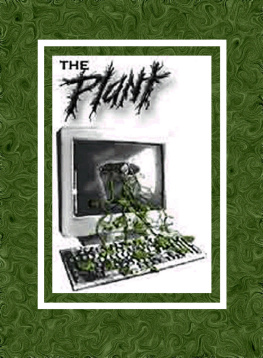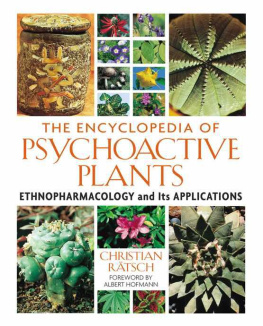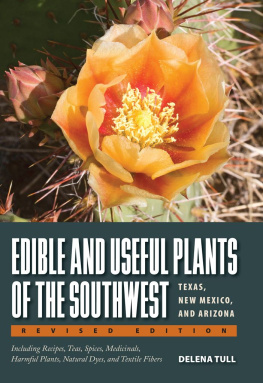
BASIC ILLUSTRATED
Poisonous and Psychoactive Plants
To buy books in quantity for corporate use or incentives, call (800) 962-0973 or e-mail premiums@GlobePequot.com.
FALCON GUIDES
Copyright 2014 Morris Book Publishing, LLC
ALL RIGHTS RESERVED. No part of this book may be reproduced or transmitted in any form by any means, electronic or mechanical, including photocopying and recording, or by any information storage and retrieval system, except as may be expressly permitted in writing from the publisher. Requests for permission should be addressed to Globe Pequot Press, Attn: rights and Permissions department, P.O. BOX 480, Guilford CT 06437.
FalconGuides is an imprint of Globe Pequot Press.
Falcon, FalconGuides, and Outfit Your Mind are registered trademarks of Morris book Publishing, LLC.
All photos by Jim Meuninck unless otherwise noted.
Project editor: Lauren Szalkiewicz
Layout: Mary Ballachino
Library of Congress Cataloging-in-Publication data is available on file.
ISBN 978-0-7627-9190-3
Printed in the United States of America
10 9 8 7 6 5 4 3 2 1
The author and Globe Pequot Press assume no liability for accidents happening to, or injuries sustained by, readers who engage in the activities described in this book.
This book is a work of reference and is not intended to supply medical advice to any particular individual. Readers should always consult their personal physicians for medical advice and treatment. The authors, editors, and publisher of this work have checked with sources believed to be reliable in their efforts to confirm the accuracy and completeness of the information presented herein and that the information is in accordance with the standard practices accepted at the time of publication. However, neither the authors, editors, and publisher, nor any other party involved in the creation and publication of this work warrants that the information is in every respect accurate and complete, and they are not responsible for errors or omissions or for any consequences from the application of the information in this book. In light of ongoing research and changes in clinical experience and in governmental regulations, readers are encouraged to confirm the information contained herein with additional sources, in particular as it pertains to drug dosage and usage. This book does not purport to be a complete presentation of all poisonous plants, and the genera, species, and cultivars discussed or pictured herein are but a small fraction of the plants known to have caused poisonings to humans and animals that might be found in the wild, in an urban or suburban landscape, or in a home. Given the global movement of plants, we would expect continual introduction of species having toxic properties to the regions discussed in this book. We have made every attempt to be botanically accurate, but regional variations in plant names, growing conditions, and availability may affect the accuracy of the information provided. A positive identification of an individual plant is most likely when a freshly collected part of the plant containing leaves and flowers or fruits is presented to a knowledgeable botanist or horticulturist. Poison control centers generally have relationships with the botanical community should the need for plant identification arise. Medicine is an ever-changing science and subject to interpretation. We have attempted to provide accurate medical descriptions of clinical management strategies, but there is no substitute for direct interaction with an expert clinician for assisting in patient care as well as a trained botanist or horticulturist for plant identification. In cases of exposure or ingestion, contact the American Association of Poison Control Centers (800-2221222), a medical toxicologist, another appropriate heathcare provider, or an appropriate reference resource.
Acknowledgments
This book represents the efforts of many individuals. I would like to acknowledge the expertise and professionalism of copy editor Kathy Brock. Thank you, Kathy. And thank you Melissa Evarts for the creative layout and design of the book. I would also like to thank the entire GPP staff and especially acquisitions editor David Legere whose hard work and dedication made this journey most rewarding. Behind the scenes JC found the elusive buckeye, Joseph led me to San Pedro and Peyote, and daughter Becca went to Brazil and returned with one fabulous coffee bean photo. Spouse Jill stood by assisting, consoling, and accepting my physical presence and mental absence. It is finished. And I am back. Let's have fun!
Introduction
Pity the poor plants, firmly rooted, ensconced between rocks, stuck without arms and legs, unable to run and hide or defend themselves. They appear vulnerable, easy preyfood for man and beast, for insects, viruses, fungi, and bacteria. Yet, given all these handicaps they persist and flourish, paving the earth in color, sheltering the wilderness in timber and flowering our plates with sensual perfume and mouth-watering flavors. How is this possible? What makes them so successful? Chemistry! Yes, chemistry! Plants are prolific chemical factories producing prodigious amounts of unique compounds that stagger the mind, that resist the burning sun, that poison and incapacitate, that burn and itch, that empty the bowels and flush the stomach. Their chemical stew chokes lungs, swells sinuses, starts the heart, and purges the brain. See them there, sessile and brave, nakedly defying the elements, hiding under the sheltering tree, distilling poisonthey are the alpha and omega, the food for all life, without them nothing exists. Make no mistake: Plants are the best thing to happen to you and this planet, so revel in their presence. Know their potential or pay the price of ignorance.
Your quest for knowledge begins here, in the wild places of our planet uncovering the secrets of the unheralded gatekeepers of life. Start by reading chapter introductions to get a feel for content. Page through the book and see what plants you instantly recognize. Pause and explore the ones that intrigue. Take this guide into the field and into the garden. Paw it dirty. Stash it next to the commode within easy reach. Enjoy every page, again and again, until the book, the plants, and you are one. Then go forth, my friend, arrogantly, secure in the knowledge that all plants, the good, the bad and the ugly, have a purpose, and that purpose is you.
Poisonous Wild Plants
Wild plants with toxic properties pose potential threats to you, your children, livestock, and pets. If you cannot identify a plant, call your local extension center or home and garden education center for assistance. It is also important to realize many toxic plants must be consumed in considerable quantities for poisoning to occur, and often poisonous plants taste bitter or acrid, keeping children and pets from ingesting large amounts. Teach young children not to put unknown plants or plant parts in their mouths.
If a child or anyone ingests a potentially poisonous plant, call your family doctor or nearest emergency room immediately. The number for the American Association of Poison Control Centers is (800) 222-1222. They can tell you if a plant is poisonous and what symptoms to expect with a particular toxin. Be prepared to provide the identity of the plant, time ingested, and presenting symptoms.
Chapter One
Poisonous Wild Plants
In our wild places, toxic plants grow side by side with edible wild plants. Therefore, it is necessary for the intrepid forager to know the difference. Mistakenly eating poisonous lookalikes account for many of the calls to hospital emergency rooms. TO avoid this life-threatening inconvenience, learn what to look for and what to avoid. Here are a number of poisonous plants that grow in fields, forests, and wet areas. Find them, know them, and avoid them. Avoid their chemistry and live a long life.
Next page






